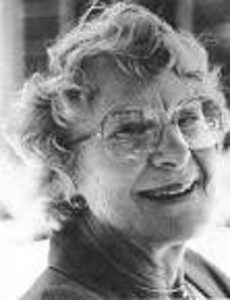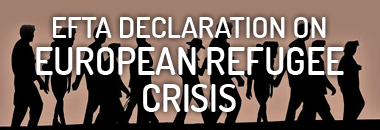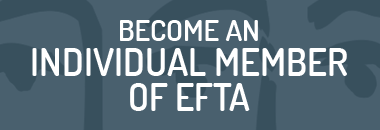EUROPEAN FAMILY THERAPY ASSOCIATION
CONNECTING FAMILY THERAPISTS AND TRAINERS
Virginia Satir
(1916 Wisconsin – 1988) Had a degree in education and was a teacher

Froma Walsh: In 1969, I was immersed in my clinical training on an innovative inpatient psychiatric unit at Yale, combining individual, group, and family therapy, and multi-family groups– fortunate that Carol Anderson was my Supervisor. We were excited by the emerging developments in systems theory and family therapy, in contrast to the prevailing psychiatric model that pathologized families and blamed “schizophrenogenic “mothers. I was excited to hear that Virginia Satir, (Conjoint Family Therapy, 1964) was going to present a 3-day workshop at the American Ortho-psychiatric Association conference in New York City. I took the train to NYC, where, dismayed that the workshop was filled, I was determined not to miss it; so I snuck in.
That experience with Virginia Satir was unforgettable. She was a striking presence: tall, blonde, in a flowing white tunic and pants; bright beads. She was engaging, direct in her gaze, emotionally open, and at ease in conversation with attendees. She invited volunteers into role play situations, demonstrating her approach and common interactional patterns she observed in distressed families. It was a transformative experience, especially for women in traditional male-dominated settings, where top-down, formal lectures prevailed, in suit-and-tie attire. I also appreciated her smart, clear speaking, friendly, and direct style – very Midwestern American —and learned that she had grown up in Wisconsin, near my childhood home.
A decade later (1978-1982), I was on the Core Faculty of the Family institute of Chicago. Openness was encouraged to varied perspectives and approaches to family therapy, so we enjoyed exhilarating experiences of workshops and staff consultation sessions with many pioneers in the field. Virginia was a frequent guest, so on one occasion, at our staff session, we asked for her help with a vexing problem we were having in our institute. At first, she advised us to look into our own family-of-origin relationships to understand the source of our frustrations. We objected strongly, insisting that the problems were not from our childhoods, but here and now, in our current organizational structure. Virginia was not dogmatic in her family-of-origin approach—She understood malfunctioning systems and engaged sensitively with us, exploring how we might facilitate needed change.
Virginia Satir, often called the “Mother of Family Therapy,” faced some gendered criticism that she was “atheoretical” and too “touchy-feely” (although Carl Whitaker was lauded for the spontaneity and emotional openness in his experiential approach). She was one of the most brilliant and creative leaders in our field. She also opened awareness to the therapist’s own influence in our practice, and appreciation for our interconnectedness. What most influenced my professional development was Satir’s deep conviction in the potential for positive change and growth.
Phil Kearney: Virginia came to Ireland for a ‘cup of tea’ in 1977 and conducted a workshop for 200 people in a Dublin hotel.
We had founded the Family Therapy Network of Ireland in 1975 as a loose gathering of young mental health professionals disenchanted with their primary roles and skills and seeking some innovative ways of working with our clients.
We ‘imported’ Fred La Belle from Montreal (on Barbara Kohnstamm’s recommendation) to run introductory workshops in the summers of 1976 and ‘77. He had trained with Virginia and so our interest turned to inviting her. We had almost no resources – either financial or in terms of literature. Virginia’s ‘Peoplemaking’ was one of the few texts we had access to.
A letter was sent to Virginia inviting her to come to Ireland and conduct a training event. We explained that we could not pay her usual fees. She replied promptly saying she would ‘be happy to come to tea’.
The appetite for new ideas was so strong that the one-day event was oversubscribed and attracted many from outside the ‘helping’ professions.
Virginia was a commanding presence. She was tall, supremely confident and benign. She engaged the participants in a range of exercises, including family sculpting that had everyone out of their seats and interacting. People loved it. I’m not sure how much was learned that could be taken back into 1970s practice, but the permission to experiment, to make contact and touch and to expand the boundaries was conveyed and embraced with enthusiasm.
It was a seminal event for those of us who organized it – our first major family therapy pioneer on Irish soil and it was a resounding success.
A footnote: Virginia’s one request was that a room be supplied in the hotel where she could retreat and rest during the day. We booked the room. As it turned out Virginia was so engaged in the process that I’m not certain that she ever used the room. At the subsequent committee meeting when we met to review the event and assess the costs we received the bill from the hotel which included breakfast in bed for two! A very embarrassed committee member had to admit that they had availed of the facilities and shared the room with a friend overnight.
Kyriaki Polychoni: I first met Virginia at the “World Federation of Mental Health conference” in Vancouver, British Columbia, Canada in the late 1970s. I was a young trainee at the Athenian Institute of Anthropos, and George Vassiliou asked me to represent the Institute at the Board meeting in his place. Rosalynn Carter – the wife of a past president of the United States, Jimmy Carter – was to speak at the conference about her struggle with addiction and mental illness. As I said, I was young and, being a left-wing activist, I must admit I was quite rude and dismissive of her at the board meeting. After the meeting, Virginia took me aside and gently and firmly said: “You know we’re all human beings and this woman was brave enough to acknowledge and share her problem”. I felt quite ashamed and immediately thanked her for trying to bring out my human compassion.
The second time I met Virginia was during the “East-West Bridging Family Therapy Congress” conducted in Prague, Czechoslovakia in 1987. This was before the political changes and the separation of the country into Slovakia and Czech Republic. It was a very important conference where all the “biggies” were presenting with almost 1600 participants from Western and Eastern Europe and all over the world. Since the socialist government was still in power at the time, there were a number of Army Generals with so many metals on their breasts, sitting in the front row. All was formal “cut-and-dry” until Virginia’s Keynote. …then, this almost 6 foot of a woman gets up and asks everyone to stand, including the Generals, shake hands and introduce themselves to their neighbor, share about themselves and their concerns about the family today. She immediately changed the whole atmosphere of the conference. I’ve been honored to have quite a number of opportunities to offer the warm-up at conferences. I am always very grateful to Virginia for having shown me to be bold and brave and facilitate warm and personal exchanges between people, even if they are 2000 in number.
My last experience with Virginia was when I was pregnant with our second daughter, 35 years ago. In one of her seminars, she asked for a trainee to volunteer to work on his/her Family Reconstruction. I felt so safe with her to open up and work on my family of origin dynamics although within an unknown crowd of people. She was a giant, gently holding me – I still remember the feeling of my palm in her large hand, guiding me in this enlightening process. It was the first time that I came in touch with the depression of my father and I can still hear the cry of the role player expressing his sadness. It was quite transforming for me.
Virginia also brought in Petros, my husband, and invited us to talk to the child growing inside me – something which brought us very close, very soon. In the reconstruction she created a human and professional learning process for us and for all. I feel I gained three lessons of life from this amazing pioneer: – compassion and humaneness to all people. – foster connection in any circumstances. – you can change your predisposition to family dynamics.
Judith Landau:I learned a secret that I want to share with gossips. In the early 1970’s, I had the good fortune to share a keynote platform with Virginia. We admitted to each other that we were both basically introverts and had to work hard to be “out there.” She took me by complete surprise because I had always admired what I saw not only as her brilliance but also as her total confidence in front of large audiences! A special bond was created and whenever I am anxious before a presentation, I put on a “Virginia Attitude” and head on to the stage!
Maurizio Andolfi: Unfortunately, I didn’t know well Virginia till the very last years of her life. We met at the Trump Tower in Fifty Avenue for a coffee. I was organizing with my Institute a big conference in Rome on Couple in crisis the following year ( 1988) and I wanted to invite her as a main speaker. She loved the invitation and mentioned that she would have liked to have a round table with Jim Framo because she was very fond of him. In the middle of our conversation, she asked if I would mind to accompany her at Bloomingdale. She had to try a dress after they did some alterations. Then, getting out of the changing room, she asked me how the dress looked on her. It was like going to a shopping center with my mother! Everything was so natural for her. On the way out, she proposed to share a cab because we were going in the same direction to upper west side of Manhattan. During the ride, she revealed to me that her first boy -friend was in Italian in her trip to Florence when she was 18 years old.
Juan Linares: Prague Conference, 1983, it was the time of communism, many nomenclature bureaucrats, all dressed in dark, inaugurated the conference with official speeches. Virginia was entrusted with the warm up. I had heard about her from the Palo Alto group, usually they criticized or disqualified her because she dealt with emotions: a woman who acts on emotions, not very scientific! Personally I didn’t know her. Beautiful and lively young women arrive on stage – part of the Satir team – and together with Virginia they ask each of us to touch, touch ourselves, feel, express…The audience reacted very well, even the “dead and dark” came to life. I never met Virginia again and I’m sorry, but I understood the strength of emotions in which she was an absolute master.



